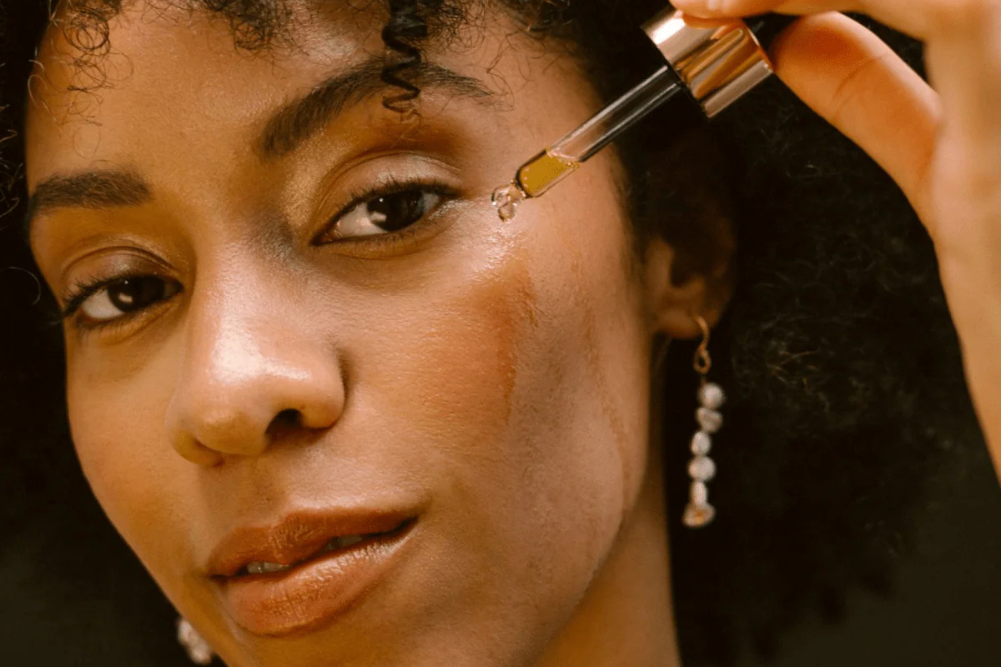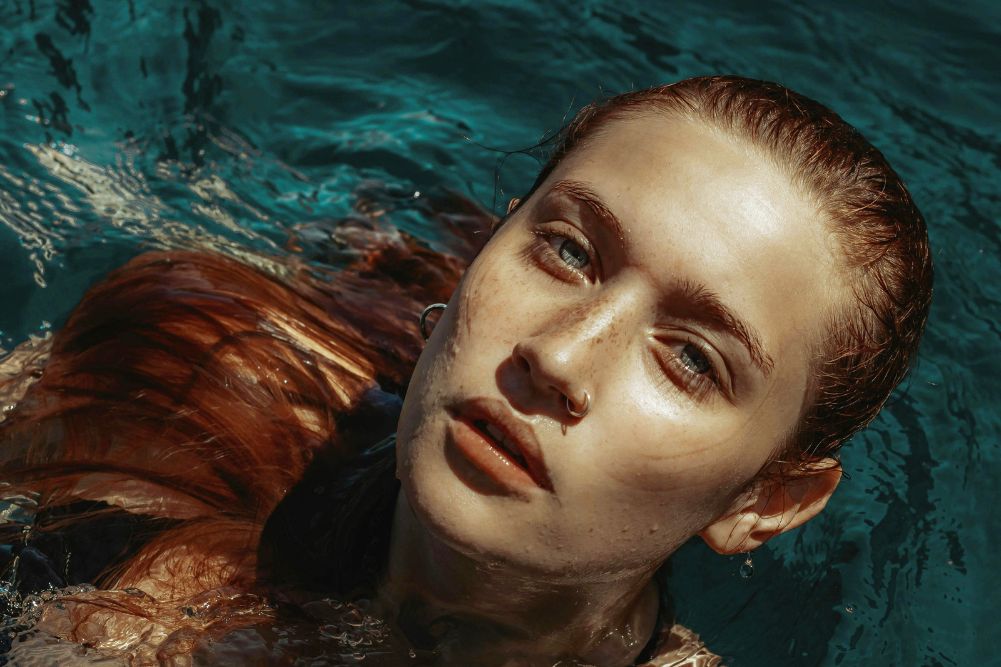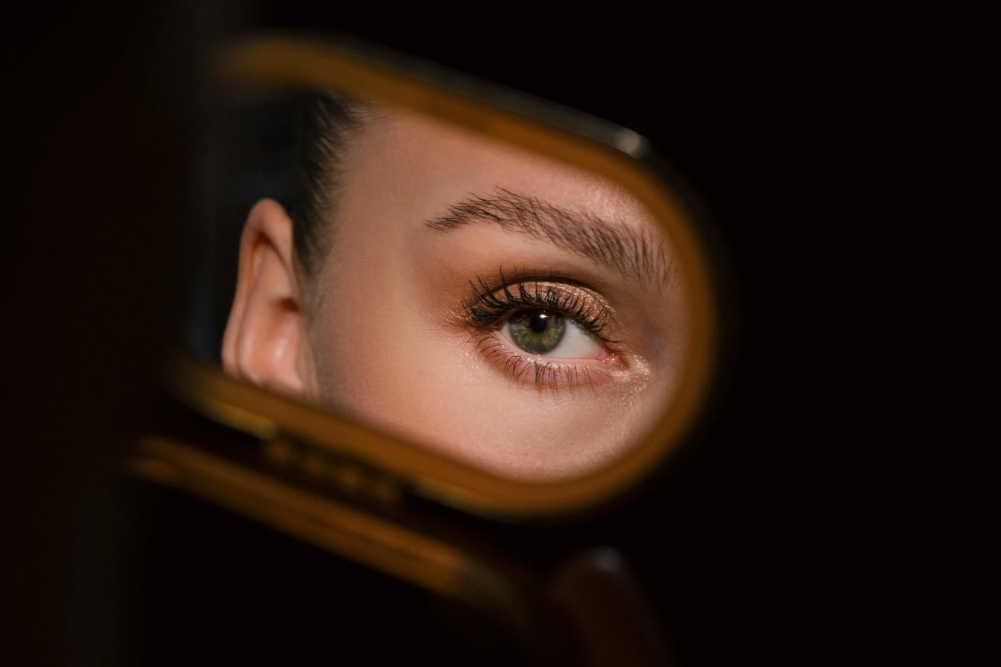Eat these foods for your healthiest head of hair
Though hair is dead it has a life of its own. Some of us spend a lifetime fighting frizz, curls, greys, loss and split ends. Why the fuss? We care about our hair because it’s intrinsic to our image. Imagine a prime minister with a pink mohawk or a policeman with purple dreadlocks. Hair also attracts a mate, reduces toxin absorption, protects your head from UV, regulates temperature and detects insects.
Inhairitance
Your hair is largely due to your genetics. The hair shaft has a scaly cuticle, which when closed creates smooth hair. It also has a cortex, which contains keratin bundles. Hair follicles grow about 20 hairs in a lifetime at an average of 12mm a month, with static, growing and falling phases.
According to Ayurveda, our body types influence our hair types. Vatas tend to dry, frizzy, thin hair. Pittas are prone to red hair and greying. Kaphas have thick, oily, lustrous hair. Though cuticle treatments such as keratin straightening temporarily protect the shaft, the best way to grow gorgeous hair is to feed the follicle, cleanse the scalp and follow healthy hair habits.
Hair food
Good nutrition fertilises healthy hair. Sometimes nutrients don’t reach hair, so it’s advisable to apply external aids, too. Be aware that restricting foods can shed hair as well as kilos. Enjoy a balanced diet of wholegrains, protein, vegetables, fruit, healthy fats and pure water, and your hair will shine from the fringe benefits.
Herbs and spices that enhance hair growth are brahmi, gingko, nettles, black pepper, coriander, cumin, cinnamon and fenugreek. Foods rich in essential fatty acids support a healthy scalp and shiny hair. For Lady Godiva locks, avoid depleting items like caffeine, nicotine, alcohol and certain pharmaceutical drugs.
Hair nutrition
Vitamin A and betacarotene
Stimulates sebum and the hair follicle for growth and gloss.
Insufficient vitamin A causes dry hair, whereas excessive vitamin A causes hair loss.
Food sources include: apricots, carrots, cod liver oil, milk, dark-green leafy vegetables, sweet potatoes.
Vitamin B3
Increases scalp circulation.
Food sources include: chicken, tuna, tofu, eggs, wholegrains, peanuts, potatoes, mushrooms, tomatoes.
Vitamin B5
Strengthens hair roots, preventing hair loss and greying. Clears dead skin cells, so helps dandruff and dry scalp.
Food sources include: wholegrains, legumes, peanuts, brewer’s yeast, shiitake mushrooms, avocado, yoghurt, corn, sweet potatoes.
Vitamin B6
Prevents loss of hair and colour.
Food sources include: chicken, turkey, tuna, salmon, shrimp, milk, cheese; plant-based sources of B6 include lentils, spinach, brown rice, sunflower seeds, wheat flour, carrots.
Vitamin B12
Ensures iron and blood supply to follicle for growth. Strengthens the cuticle and prevents hair loss.
Food sources include: clams, liver, chicken, eggs, fortified cereals, Swiss cheese, spirulina, yoghurt.
Biotin
Essential for protein synthesis, including keratin. Biotin deficiency causes hair loss and dry hair. Supplementation promotes growth and prevents greying.
Food sources include: Swiss chard, bananas, carrots, walnuts, eggs, milk, peanuts, strawberries, cauliflower
Collagen
Strengthens and thickens the hair cuticle.
Food sources include: gelatine, mushrooms; dark green leafy vegetables and vitamin C help to produce collagen.
Vitamin C
Due to antioxidant properties, prevents hair loss.
Food sources include: kiwifruit, gooseberries, strawberries, pineapples, oranges, capsicum and tomatoes.
Inositol
Prevents hair loss and fortifies hair at follicle.
Food sources include: grapefruit, orange, kidney beans, peas, green beans, lima beans, split peas, blackeyed peas, blackberries, artichokes, okra.
Vitamin E
Increases circulation to scalp’s capillaries to nourish new hair.
Food sources include: wheatgerm oil, sunflower seeds, almonds, spinach, Swiss chard.
Iodine
Sufficient iodine is essential to prevent thyroid disorders, which can cause hair loss.
Food sources include: yoghurt, milk, strawberries, eggs, seaweed, iodised salt.
Omega-3 fatty acids
Prevents hair loss, flaky scalp and dry hair.
Food sources include: flaxseed oil, walnuts, salmon, sardines and other oily fish, olive oil.
Protein
Your hair is largely made of keratin and your body needs protein to allow cells called keratinocytes to manufacture keratin. Essential amino acids for healthy hair include cystine, cysteine, methionine, leucine, serine, glycine, arginine and threonine. Protein deficiency causes loss of colour and hair.
Food sources include: meat, eggs, cheese, tempeh, mung dal, urad dal.
Iron
Iron deficiency is a common cause of hair loss in women. It is essential to feed the follicle and sustain the shaft.
Food sources include: spinach, apricots, red meat, red kidney beans, adzuki beans, blackstrap molasses (reputed to restore colour also).
Zinc
Ensures shaft strength and integrity of follicle to prevent hair loss.
Food sources include: oysters, wheatgerm, tahini, sunflower seeds, pumpkin seeds, peanuts.
Silicon
A trace mineral essential for hair strength from the core to the cuticle, zinc makes hair more elastic, shiny and manageable.
Food sources include: wholegrains, almonds, apples, cabbage, carrots, cucumber, oranges, kelp, flaxseed, strawberries, horsetail tea.
Clear headed
It takes a little more than lather, rinse, repeat to ensure healthy hair. Satin strands start from the scalp, so it’s essential to cleanse the crown of chemicals, environmental residue and dihydrotestosterone, the hair-loss hormone. Chemicals often strip the keratin layer and nutrients, causing thin, brittle, split hair as well as being harmful to the body. Part ways with hair hazards including alcohol, ammonia, mineral oil, petrolatum, polyethylene glycol, propylene glycol, sodium lauryl sulfate, sodium laureth sulfate, diethanolamine, momoethnanolamine, triethanolamine, colour, fragrance, imazolidinyl urea, DMD hydantoin and parabens. Use organic hair dye rather than chemical ones.
Install a showerhead filter to remove hair harmers. Calcium, silica and magnesium make hair dry and fine and cause flaky scalp. Iron causes brittle and orange hair. Copper and chlorine turn blonde green, so wet and coat your blonde hair in coconut oil before swimming. Brushing dry hair from roots to tips daily stimulates the scalp and distributes the acidic sebum along the shaft, protecting it from pollutants. The best cleansers have an acidic pH, remove residue and are environmentally safe and cheaper. Here are my top four favourites.
Boric acid
An effective, inexpensive and antimicrobial cleanser. It doesn’t lather but only takes a few squirts for squeaky clean, flake-free hair. Mix 3.5L of cold water and
⅛ cup borax (or boric acid) powder in a bottle, seal the top, shake well and let settle. Pour into dispenser bottles.
Citric acid
A great rinse to get the boric acid totally out. It’s antibacterial and leaves the hair shiny, smooth and flake-free. Mix 400mL water with ¼ teaspoon citric acid crystals. Rinse hair thoroughly.
Shikakai powder
Known as fruit for the hair, shikakai has a mild pH and cleanses hair without stripping natural oils. It promotes long, thick, strong hair and eliminates dandruff. It is available from Indian grocers.
Hibiscus flowers and leaves
This cools and cleanses the scalp, creating silky soft hair. Take two cups of hibiscus leaves and flowers. Wash and remove petals from flowers. Add five cups of water. Blend into a mucilaginous puree. Strain and apply to scalp for five minutes before rinsing out with cool water. To your cleanser, add a few drops of the rosemary and lavender essential oils for new growth. Jasmine essential oil calms the mind and cools the scalp, reducing stress-related hair loss and greying.
Frizz free
Do the frizzies make you frazzled? Tame flyaways with these tips:
- Apply a deep conditioning oil like ojon, argan or coconut before cleansing. This restores moisture, shine and smoothness. Wash your hair at night so you don’t have to blowdry it.
- Rinse hair with a post-conditioning keratin treatment or a raw egg mixed with two cups of water to restore the shaft.
- Squeeze hair dry; don’t rub it to form frizz. Apply a serum for gloss, like heat-protecting argan oil. Use a wide-toothed comb while wet and prefer natural styling techniques. If blowdrying, direct the air down from root to shaft on low heat.
- Don’t brush your hair too much when it’s dry as it stretches and can kink hair. Take coconut oil for lustrous locks lubricated from within. Get regular trims and protect long hair from tangles by wearing a plait.
Hair today, gone tomorrow
Australians spend millions annually to regain and maintain their manes. Hair-loss conditions include excess hormones, deficiencies, hypothyroidism, drug side-effects, polycystic ovarian syndrome, autoimmune disorders, trauma, stress, chemical trauma and anaemia. Men are more susceptible to hair loss due to male hormones testosterone, androsteinedione and dihydrotestosterone (DHT). Taking the herbs saw palmetto and nettle has been shown to significantly reduce DHT levels, enhancing hair growth.
Before you go bald, the good news is there are effective ways to get your crown back. Avoid heat on the head, heating foods and synthetic chemicals and take hair food nutrients. Stimulate cranial circulation with scalp massage, yoga inversions or an inversion frame. De-stress daily with conversation, recreation, meditation or guided relaxation. Visualise your flowing hair and affirm, “I have a gorgeous, glossy head of hair.”
Don’t lose your head with your hair — there are many attractive hairless people. Work the look with cool confidence. As Mae West said, “A man can be short and dumpy and getting bald, but if he has fire, women will like him.”
Four reliable hair treatments
Fenugreek hair pack
Fenugreek is high in mucilage, nicotinic acid, lecithin and protein. It’s also cooling for the scalp. A study involving 60 subjects taking fenugreek resulted in 82.9 per cent reporting improved hair volume. The following hair pack restores hair-shaft Health and gives hair body as the rice water is a wonderful volumiser.
Soak 2 cups fenugreek seeds for 12 hours in enough pure water to cover.
Make basmati rice by boiling 2 cups rice to 8 cups water. Strain and keep the water, cover and sit it outside the fridge for 12 hours.
Strain fenugreek seeds and combine with 1 litre rice water. Blend to a fine purée.
Apply 1–2 cups paste to dry or wet hair. Massage well into scalp. Leave in for 10–20 minutes. Wear a shower cap during this time or enjoy a bath. Wash out well with water or a natural shampoo.
Each time you use a pre-made batch, add more warm water or rice water to restore its creamy consistency.
Egg rinse
Egg is nature’s keratin capsule. Expect thicker, shinier hair after applying egg every second day for three weeks. Take two raw organic eggs and whisk with 4 cups water. Rinse through your scalp and hair. Wash off with cleanser of choice after 5 minutes. You can also nurture growth internally by eating eggs regularly.
Brahmi and bhringaraja hair oil
This oil promotes thick, long, grey-free hair. It also maximises mental facilities and cures conditions such as psoriasis and dandruff. Massage melted oil into scalp with strong fingertip strokes. Leave in for one hour then wash out.
Amalaki and rosemary cleanser
Amalaki or gooseberry is Ayurveda’s potent antioxidant. It prevents premature hair loss and greying. Rosemary is a wonderful scalp stimulant.
1½ cups distilled water
2 tbsp amalaki powder
1 cup hibiscus leaves
½ cup rosemary hydrosol
½ cup organic apple cider vinegar
Use as a shampoo as often as required.
Snowy shoulders
Let’s face it, the lamington look is never coming in. A dry, scaly scalp as in dandruff or psoriasis is always aggravated by internal dryness and acidity. So first ensure you’re drinking enough water or vegetable juices and take essential fatty acids in the form of flax or fish oil. Vitamins A, B group and E plus zinc and selenium also delete dandruff at the root. Next, reduce acidic foods such as oranges, tomatoes, alcohol, sugar and red meat.
Dandruff is exacerbated by fungal or bacterial infections, so add 5 per cent concentrated tea-tree, neem or eucalyptus essential oil to haircare. Rinse your head in sea water and leave on for an hour before cleansing. Ensure hair is dry before bed or tying up. Infrequent washing promotes the problem, as will chronic immune system illness, stress and chemical hair products. Coconut oil followed by chickweed shampoo removes the scale and scratch amazingly.
Stylish secrets
Hair endures years of teasing, colouring, spraying, curling and straightening. Though bullied into obedience temporarily, it defiantly bounces back to its natural state. Work with your natural hairloom. Tame your tresses without chemicals or harsh heating by styling it with sensitivity.
- Use a serum such as argan oil after washing.
- Apply a natural hairspray to hold hair in place. Boil one diced lemon in 2 cups water and reduce to half. Put in a spray bottle and keep in the fridge for a week.
- Make natural gel with ½ teaspoon gelatine or agar agar and ½ cup warm water. Mix and store in fridge.
- Comb your hair with a wide tooth comb when wet and a natural bristle brush when dry.
- For natural curls, try pincurl or rags method.
- Dress your do with simple accessories. Sweep hair into a stylish French twist in seconds. Side braids blossom with a few flowers, and a nice fringe highlights your face like a halo.








